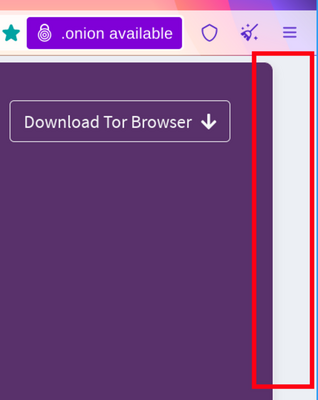Hvað er gerð fingrafara vafra
Gerð fingrafara í vafra er það ferli að safna upplýsingum um vafrann svo hægt sé að reikna út auðkenni eða eiginleika hans.
Stillingar og eiginleikar hvers vafra geta orðið uppistaða í "fingrafari vafrans".
Most browsers inadvertently create a unique fingerprint for each user, which can be tracked across the internet.
Til að sjá nánari útlistun um gerð fingrafara í vöfrum, gætirðu skoðað þessar greinar á Tor-blogginu: Browser Fingerprinting: An Introduction and the Challenges Ahead og Tor Browser: a legacy of advancing private browsing innovation.
Hvers vegna er gerð fingrafara vafra ógn við persónulega friðhelgi á netinu?
Í fyrsta lagi er ekki nauðsynlegt að óska eftir leyfi frá notandanum til að safna þessum upplýsingum.
Hvaða skrifta sem er keyrandi í vafranum getur hljóðlega byggt upp fingrafar af tækinu án þess að notendur verði varir.
Second, if one attribute of the browser fingerprint is unique or if the combination of several attributes is unique, the device can be identified and tracked online.
This means that even without cookies, a device can be tracked using its fingerprint.
Hvernig Tor-vafrinn kemur í veg fyrir að tekin séu fingraför
Tor Browser is specifically engineered to minimize the uniqueness of each user's fingerprint across various metrics.
While it is practically impossible to make all Tor Browser users identical, the goal is to reduce the number of distinguishable "buckets" for each metric.
This approach makes it harder to track individual users effectively.
Tiltekin eigindi, eins og upplýsingar um gerð stýrikerfis og tungumál, eru nauðsynleg fyrir virkni vafrans og því ekki auðvelt að fela eða falsa.
Instead, Tor Browser limits the variety within these attributes to reduce distinctiveness.
Til dæmis takmarkar Tor-vafrinn fjölda leturgerða og virkjar varaletur, staðlar skjástærðir og stærðir glugga með svokallaðri letterboxing-afmörkun, auk þess að takmarka úrval umbeðinna tungumála vefsíðna við liltekið, lítið sett.
The key goal of Tor Browser's anti-fingerprinting protections is to make it significantly more challenging to gather enough information to uniquely identify users, thereby enhancing privacy without compromising necessary functionality.
Varnir gegn gerð fingrafara í Tor-vafranum
Letterboxing-afmörkun
To prevent fingerprinting based on screen dimensions, Tor Browser starts with a content window rounded to a multiple of 200px x 100px.
The strategy here is to put all users in a couple of buckets to make it harder to single them out.
That works so far until users start to resize their windows (e.g. by maximizing them or going into fullscreen mode).
Tor Browser ships with a fingerprinting defense for those scenarios as well, which is called Letterboxing, a technique developed by Mozilla and presented in 2019.
It works by adding margins to a browser window so that the window is as close as possible to the desired size while users are still in a couple of screen size buckets that prevent singling them out with the help of screen dimensions.
Til að gera söguna stutta, þá virkar þessi tækni þannig að útbúnir eru hópar notenda með tilteknar skjástærðir, þannig að mjög margir notendur eru með sömu skjástærð, sem gerir mun erfiðara að aðgreina notendur úr frá þessum mælikvarða.

User-Agent and Operating System spoofing
The User-Agent string is a value websites can use to identify details about your browser, operating system (OS), CPU architecture, vendor, and version.
Since this information can reveal which OS or device a user is using, it has been a vector for browser fingerprinting, allowing websites or trackers to potentially single out users.
Tor Browser addresses this by spoofing the User-Agent. Users cannot choose a specific operating system or attempt to imitate every possible platform.
Instead, Tor Browser standardizes User-Agent values to reduce uniqueness and avoid creating a false sense of privacy:
- All Windows appear as Windows 10.
- All macOS appear as OS X 10.15.
- All Android as Android 10.
- All other systems like all Linux distributions (including Tails and Qubes), *BSD and other operating systems are grouped together and reported as "Linux running X11".
- All the other details (such as the architecture) are also normalized per-platform.
In this case, the fingerprint resistance strategy in Tor Browser is to protect real values of the User-Agent by spoofing, but also have a large enough user set.
User-Agent is sent to websites as an HTTP header, and it is available to JavaScript as navigator.userAgent.
Inconsistencies in these values can trigger anti-bot and anti-fraud systems into categorizing Tor users as a bot, and deny their requests, which in turn affects usability for Tor Browser users.
Some privacy tools or users suggest that making all users appear as Windows would offer the best cover.
However, perfectly spoofing across all browser contexts is not possible and active fingerprinting methods (using fonts, features, behavior, with or without JavaScript, etc.) can often be used to infer aspects of the hardware or operating system.
Tor Browser does not let users select which OS they appear to be.
This is intentional: any option to choose would only make users more unique and thus easier to fingerprint.
The small set of standardized options is key to keeping users blended together, maximizing privacy for everyone.
Aðrar varnir gegn gerð fingrafara
Til viðbótar við letterboxing-afmörkun, þá notar Tor-vafrinn margar aðrar leiðir til að minnka svigrúm til gerðar fingrafara og verndar þannig friðhelgi notendanna.
These features include Canvas image extraction blocking, NoScript integration, and first-party isolation.
Til að sjá heildarlista yfir eiginleika, þá ættirðu að lesa skjalið um hönnun og virkni Tor-vafrans.